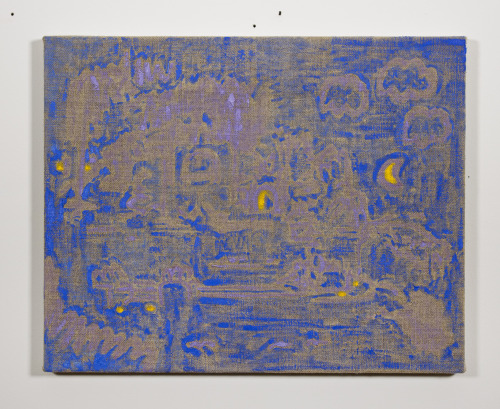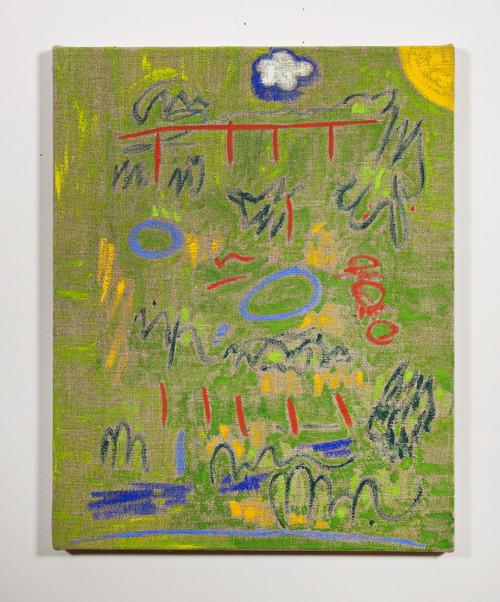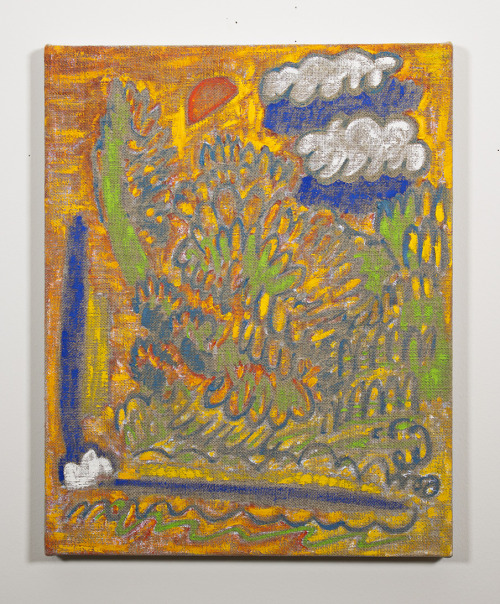
The characteristically surreal is off-putting, that is, we already inhabit a certain amount of surreality in what we would posit as the building blocks of our day-to-days. I have my cup of coffee and that coffee is too hot, but maybe that coffee is only hot because, you know, I got my coffee yesterday and it was fine. Maybe it has more to do with the coldness of the air, that is possibly felt the most the moment I leave my home. That same coffee lights my hallway and I buy what I buy. Self-stranding. There is a landscape that I burn through, and that is all part of a larger picture I know. And that larger picture is shuffling, still I never change.
Into the Blue is a stranded show. It’s an effective embarrassment, and a big ‘Fuck You’ to and from everyone left behind. A party, gassed by what was left behind, ensues as we are stranded, as we ourselves say we are better off without this pop machine. We then turn to our babe I Love You I Do–and my “what I want” is “what I want.” Sia sounds more like poetry with piano accompaniment, without a present voice to form, some character. What I find empowering is that this set of work never leans one way.
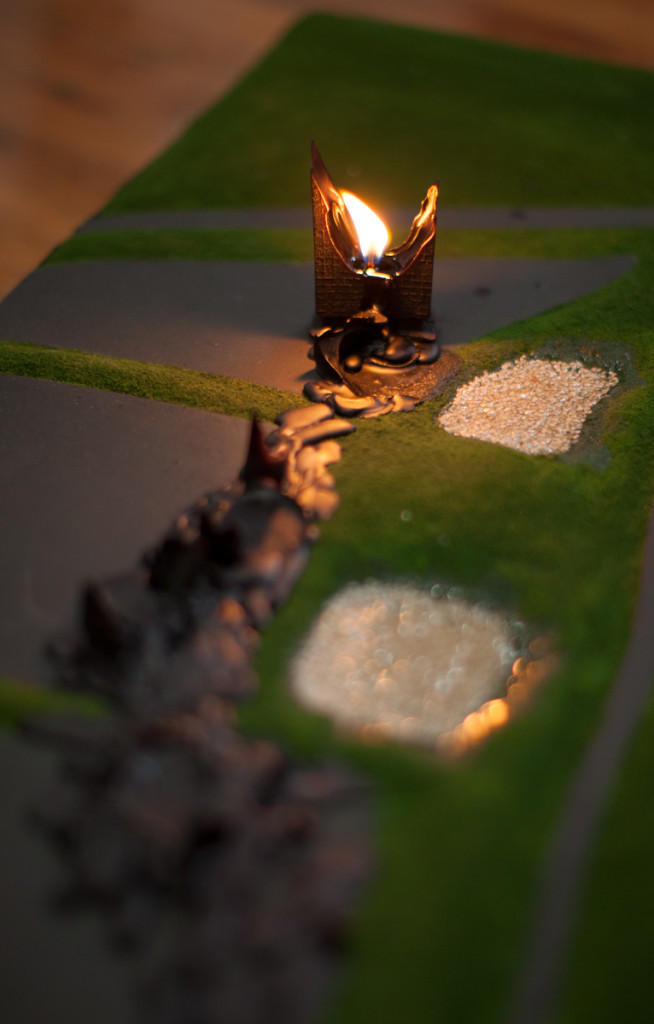
A miniature set on the floor in front of a baby grand, with a familiar landscape. A candle burns a line and a black tar-type substance puddles around it. Not too far away, some of the wine I drank last week; it isn’t in me (I don’t have it) and it powers my fan–it keeps me here. And with language there is a precondition of separation–its subsequent doubling through pop proves too fast to follow. I just came to watch / I don’t know all that much. I lay dispersed humming a song that I don’t remember ever liking.
I get a sense that there is something missing or that the main act has yet to arrive. There does, however, seem to be a consistent reassurance that it was somewhere. (Maybe in the ocean (a piano playing the greatest hits of our generation), it sinking just as I am though a lot faster, I would assume.)
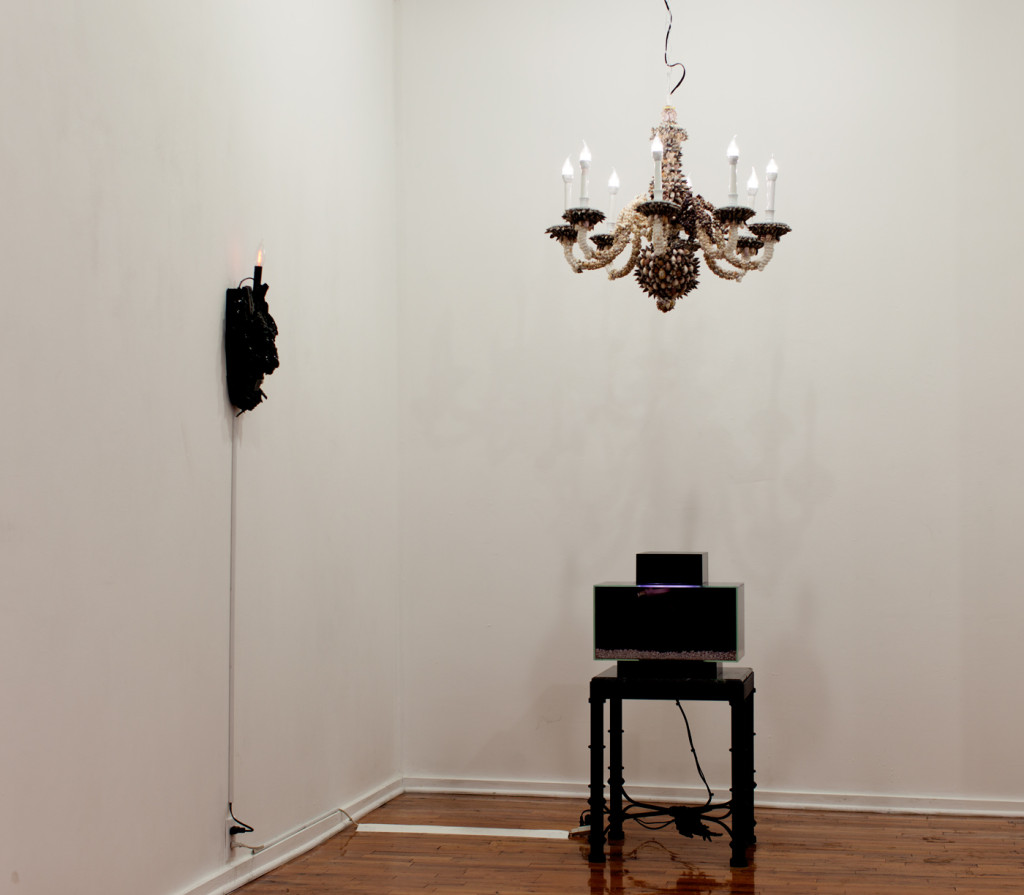
Further, some of the moves in this exhibition are telling me that this machine remains better off sunken or stranded. It builds a pottery barn chandelier, it operates in private despite our handling of it as if it does not. And what are we celebrating?
This is an ironic turn the work takes, as if the individual could ever enact a divorce from their idealized consumerist selves… and that that divorce would include piano accompaniment from Evanescence, Sia, etc. Though even if I find the song Wake Me Up Inside rather trite, I still know all the words. The consumer may be the missing figure that this show is circling.

By incorporating an understanding that the consumer and the individual were never/could never be one and the same, a presence could be felt, as if the exhibition is attempting to summon the consumer and their dogmatic purchasing. As if when the pop machine is stranded, this encompassing figure will be as well.
And in the inconsequential nature of the work’s physical manifestation, there lies an indifference to whether the work was purchased or fabricated. Through that indifference, I am able to enact a reduction that, as a supposed consumer, I am familiar with. This reduction is a .jpg compression that shares an idea in spite of how much is lost through the quickness of its load. A supposed universality, and an overdue goodbye.
Images courtesy of Terrault Contemporary. Photo credit: Duncan M. Hill. Travis Levasseur‘s project Into the Blue is on view through March 26, 2016 at 1515 Guilford Ave., Baltimore, MD
